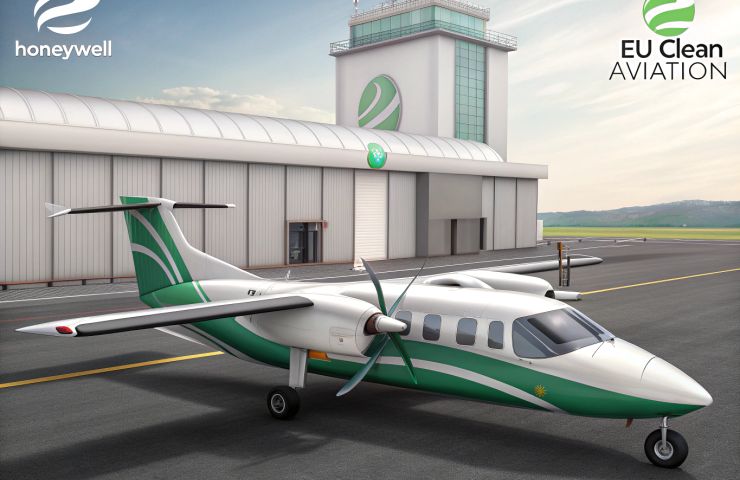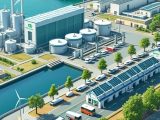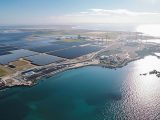
Hydrogen Aircraft Powertrain: Honeywell’s Project NEWBORN Drives Zero-Emission Regional Flights
October 14, 2025Honeywell Aerospace is excited to unveil Honeywell Project NEWBORN, a groundbreaking consortium effort led from its Brno, Czech Republic R&D facility and backed by the EU’s Clean Aviation Joint Undertaking. This initiative dovetails perfectly with Europe’s push for Sustainable Aviation on short-haul hops. We’re combining Honeywell’s fuel cell know-how—honed since the 1990s—with €33.3 million in EU funding, part of a €43.9 million budget. By the end of 2025, our goal is to deliver a 1 MW-class Hydrogen Aircraft Powertrain that paves the way for cleaner skies.
The Clean Aviation Joint Undertaking is the EU’s flagship public-private partnership, blending public funding with private-sector muscle to zap aviation emissions and spark fresh aerospace innovations. Through support for trailblazers like NEWBORN, it’s aligning perfectly with the Green Deal’s 2050 carbon-neutral flight goals and championing Zero-Emission Flight. It really shows what can happen when governments and industry pool resources to tackle the planet’s biggest environmental challenges. It’s proof that smart co-investment can move the needle fast.
Our focus? The workhorses of regional air travel—those 19-seat turboprops churning out fuel bills and CO₂. With stricter regulations and passengers demanding greener rides, operators are hunting for low-carbon solutions. Here’s the clever bit: ditch the old gas-guzzlers, swap in a Hydrogen Fuel Cell system, and you’re left with nothing but water vapor. Quiet, efficient, and utterly emissions-free—that’s the new standard for Sustainable Aviation. Plus, they run smoother and demand less upkeep than conventional engines.
How the Technology Works
At the heart of NEWBORN is our Hydrogen Aircraft Powertrain, a 1 MW-class setup ready to power a small regional plane. We store liquid hydrogen in cryogenic tanks onboard, then feed it into a Variable-pressure Fuel Stack that smartly adjusts pressure on the fly. That dynamic tuning keeps the electric output sweet and the system durable—we’re shooting for 20,000 hours, on par with today’s turboprops. It’s a neat trick—delivering steady power while minimizing wear.
Inside each fuel cell, hydrogen meets oxygen from the air and voilà—electrons start flowing, heat gets generated, and water vapor is all that’s left. Juggling that heat is mission-critical, so we’ve added a slick Thermal Management System. We adapted this design from Reaction Engines (they wrapped up in 2024), swapping in proven commercial parts to keep temps stable and reliability sky-high. It’s all about keeping things in the sweet spot, even under heavy loads.
Once you’ve got electricity, it’s off to the Electric Motors, which spin the props with impressive efficiency and hardly any noise. This modular build lets us test pieces independently and roll out upgrades fast—a major plus for hitting certification milestones. It’s a game-changer for certification speed and future growth. And the best part? It lays the groundwork for scaling up to multi-megawatt powertrains for larger aircraft.
Practical Applications and Benefits
NEWBORN is tailor-made for 19-seat turboprops flying hops under 500 km, which make up a big slice of Europe’s short-haul market. With the Hydrogen Aircraft Powertrain onboard, regional carriers can redesign their route economics, cutting operating costs and boosting their green credentials. Swapping jets or old props for a zero-emission powertrain cuts carbon taxes and opens up green subsidies, so airlines can save money and brag about cleaner skies. Passengers get a quieter, more eco-friendly trip, and everyone wins.
But it doesn’t stop at passenger flights. Imagine cargo planes hauling vital goods, medevac missions rushing patients, or powering remote airstrips without a connection to the grid. Each one marks a step toward mainstream Zero-Emission Flight. Starting small helps us prove the concept, fine-tune the tech, and then push into bigger applications that stretch far beyond regional hops.
Made in Brno, Made for Europe’s Future
Our Brno R&D hub in the Czech Republic—home to some 380,000 curious minds and a buzzing university scene—is the nerve center of Project NEWBORN. It’s the perfect spot to prototype, refine, and test subsystems, while creating high-tech jobs and boosting local suppliers. From early design sketches to full-scale mockups, every piece of our Hydrogen Fuel Cell system gets attention here. “Made in Brno” isn’t just a tagline; it’s a promise that Europe’s green aviation future starts here.
On the testing front, we’re teaming up with Pipistrel in Gorizia, Italy. This 35,000-strong city has a rich aviation heritage and top-notch facilities. Cross-border collaborations like this not only ramp up testing muscle but support regional economies, knitting together a strong European supply chain for hydrogen aviation. When the rigs fire up, local engineers and technicians in Gorizia get hands-on experience, building practical expertise in hydrogen ground support. It’s another sweet example of how Honeywell Project NEWBORN is stitching together talent and resources across borders.
Broader Impact and Challenges
Project NEWBORN could send shockwaves through Europe’s aerospace sector by turbocharging hydrogen production, storage, and refueling networks at airports—the bedrock of a true hydrogen ecosystem. Local towns stand to gain new manufacturing sites, training schemes, and a slew of high-value engineering jobs, all fueling the rise of a robust green aircraft supply chain. It’s a catalyst for making Zero-Emission Flight not just a dream but a daily reality.
Of course, rolling out hydrogen tech across an entire continent isn’t without its headaches. We need a reliable network of cryogenic refueling stations, rock-solid safety standards, and certifications that can keep pace with fast-changing regs. But with the EU footing a big chunk of the bill and Honeywell’s decades of Hydrogen Fuel Cell smarts steering the way, we’re confident we can iron out the kinks and accelerate toward full-scale deployment.
What’s Next?
We’re on track to wrap up full powertrain assembly by the end of 2025—an exciting milestone that sets the stage for rigorous ground tests at Pipistrel’s Gorizia site through late 2026. Hitting TRL4 will show the system can handle the heat, pressure, and flight profiles we’ll throw at it. That’s the green light for the next phase: flight trials planned for 2028, pending certification and funding.
Then comes the big leap: flight testing, penciled in for 2028. That’ll depend on locking down extra funds and navigating the certification maze, but if all goes to plan, we’ll prove hydrogen-powered regional jets are more than just a neat idea—they’re the future of Zero-Emission Flight. Down the line, we’re already mapping out 10 MW-class setups for 75–100-seat aircraft—imagine that! Higher capacity, more routes, and green aviation on a whole new scale.
We can’t wait to see Honeywell Project NEWBORN take off—and not just on the runway, but as the blueprint for Sustainable Aviation. With decades of hydrogen expertise at Honeywell and the EU’s unwavering support, the sky’s literally the limit for Zero-Emission Flight.



 With over 15 years of reporting hydrogen news, we are your premier source for the latest updates and insights in hydrogen and renewable energy.
With over 15 years of reporting hydrogen news, we are your premier source for the latest updates and insights in hydrogen and renewable energy.